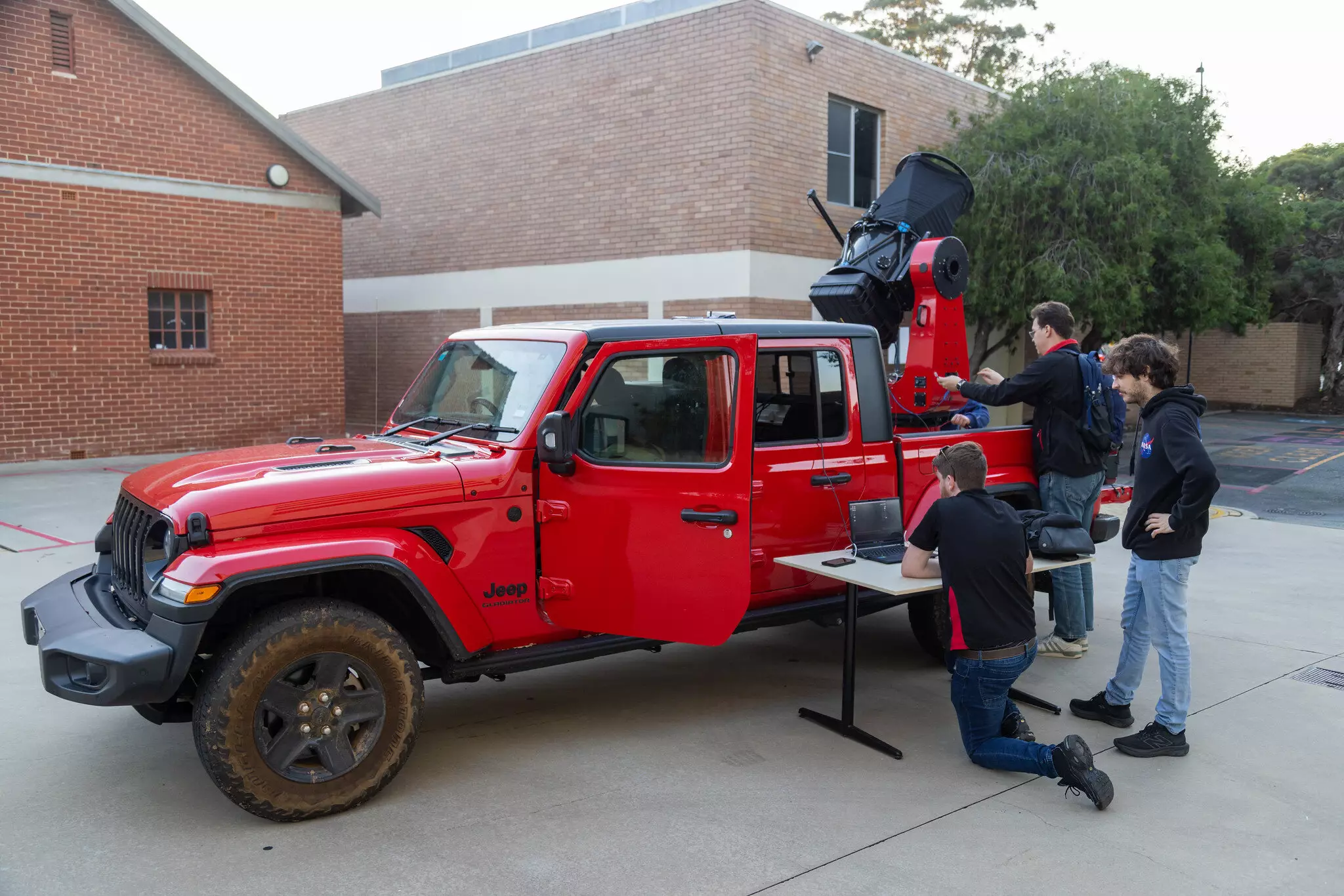The University of Western Australia’s TeraNet project has achieved a groundbreaking milestone in space communication technology. The network of optical ground stations, led by Associate Professor Sascha Schediwy, successfully captured laser signals from a German satellite in low Earth orbit. This achievement opens the door to a significant increase in communication bandwidth between space and Earth, laying the foundation for the next generation of space communications.
The TeraNet team received laser signals from OSIRISv1, a laser communication payload on the Flying Laptop satellite, during flybys last Thursday. This marks a critical first step in establishing a high-speed space communications network across Western Australia. By utilizing lasers instead of traditional radio signals, TeraNet can potentially transfer data at thousands of gigabits per second, offering a significant improvement in data transfer capabilities between satellites and Earth.
While the potential of laser communication is promising, there are challenges to overcome. Laser signals can be disrupted by clouds and rain, posing a threat to reliable communication. To address this issue, the TeraNet team has strategically placed three ground stations across Western Australia. This ensures that even if one station is affected by weather conditions, the satellite can still transmit data to another station with clear skies. Additionally, one of the ground stations is mobile, mounted on a custom-built Jeep truck, allowing for rapid deployment to areas that require immediate high-speed communication capabilities.
High-speed laser communication from space has far-reaching implications for a variety of industries. Earth observation satellites will benefit from improved data transfer capabilities, while military communication networks will see enhancements in speed and security. In sectors such as autonomous mining operations and national disaster planning, secure remote operations will be bolstered by TeraNet’s advanced communication technologies. Furthermore, the network will support multiple international space missions, offering a range of optical communication standards and cutting-edge technologies to facilitate deep-space communication, quantum-secured communications, and precise positioning and timing.
Expansion and Future Prospects
The TeraNet network consists of ground stations at UWA, the Mingenew Space Precinct 300 km north of Perth, and a mobile ground station at the European Space Agency’s New Norcia facility. With plans to connect to other optical ground stations worldwide, the TeraNet project is poised to revolutionize space communication on a global scale. As advancements in laser communication technology continue, the possibilities for high-speed data transfer, secure communications, and international collaboration in space exploration are endless.
The success of the TeraNet project represents a significant leap forward in space communication technology. By harnessing the power of lasers for data transfer between satellites and Earth, the TeraNet network is paving the way for a new era of high-speed, reliable, and secure space communications. As the project expands and evolves, the impact on various industries and international space missions will be profound, shaping the future of space exploration and communication.


Leave a Reply